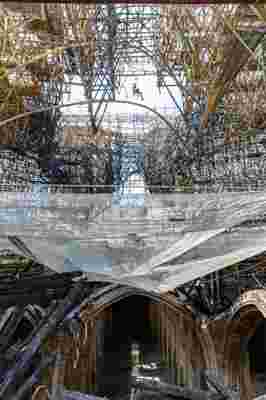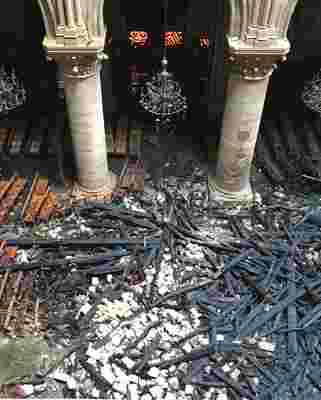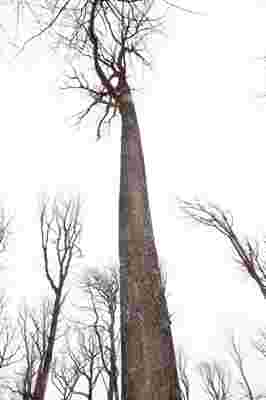Two Years Later, Here’s the Latest With Notre-Dame’s Restoration
The world watched on as the church’s spire fell on April 15, 2019, after a fire destroyed the centuries-old landmark. Now, two years later, the church is still going through a massive restoration. This jewel of Gothic architecture is being rebuilt with oak trees from local forests, as 200 construction workers operate on-site every day. The goal, according to French president Emmanuel Macron, is to have the church repaired before the city hosts the 2024 Summer Olympics , which is slated to begin on July 26, 2024, in Paris. But is that a realistic goal?
“It’s a delicate question,” says Michel Picaud, the president of Friends of Notre-Dame de Paris , the charity fundraising to rebuild the church. “Opening the cathedral in 2024 won’t necessarily be the last step in the restoration,” he continues. “There’s more work to do. Everyone expects to enter the cathedral by 2024, but then it will continue after that date towards a full restoration.”

The restoration process was stalled due to the pandemic, but the work has resumed.
The first step for Notre-Dame’s roof and spire reconstruction was the safety phase , which started in the summer of 2019 and lasted until November 2020. Scaffolding was built around the cathedral to restore the spire, tarp was installed above the vaults, gargoyles were wrapped, and the flying buttresses were reinforced. Construction continued until the pandemic hit. There was a three-month pause of the reconstruction in early 2020, but construction resumed June 8, 2020, with workers removing more than 300 tons of burned scaffolding that surrounded the spire, which took until December 2020.
To remove the scorched scaffolding on the roof, a secondary structure of metal beams was built on three levels to help prevent the collapse of the church. Workers dangled on ropes to access the heart of the scaffolding.

The current goal is to have the cathedral open by the summer of 2024.
The latest update from Notre-Dame is that all the burned timbers were removed. “We’ve made great progress in the past month, it’s very encouraging,” says Picaud. “When I last visited the church, I saw one of the biggest steps: installing scaffolding inside the cathedral.”
The church is depending on donations through the fundraising organization and won’t have a ticketing system once it reopens (it will remain free entry). “It’s difficult, as you imagine, there’s so much to do,” says Picaud, who is planning a virtual event with the French Embassy to the U.S. on April 15 at 12 EST, with a presentation and status update about the restoration.
Today, there is still a hole on top of the church. They’re also building a replica of the church’s spire that was initially designed by 19th-century architect Eugène Viollet-le-Duc, made of more than 1,000 donated oak trees from public and private forests from all over France. The trees are being cut and collected this spring before they sap and will be stored for 12 to 18 months to prepare them for the reconstruction phase, starting fall of 2022 .

Long, straight oak trees, which will be used in the restored structure, are being sent to Paris from all over France.
The goal is to store the wood at a low humidity level (below 30%). Each tree must be long enough to fit an overhead curve of 65 feet long to restore the roof’s framework (its nave and choir). Some of the trees are over 200 years old, according to Bertrand Munch, the director general of the National Forestry Office.
It’s slow progress, but the team of engineers, carpenters, and construction workers remains hopeful. “The selection of these first oaks trees is an important step on the road to the rebirth of the cathedral,” says Dominique Jarlier, president of the National Federation of Forestry Municipalities. “It’s part of a huge transformation.” But with all the hard work and determination, it appears the wait will be worth it.